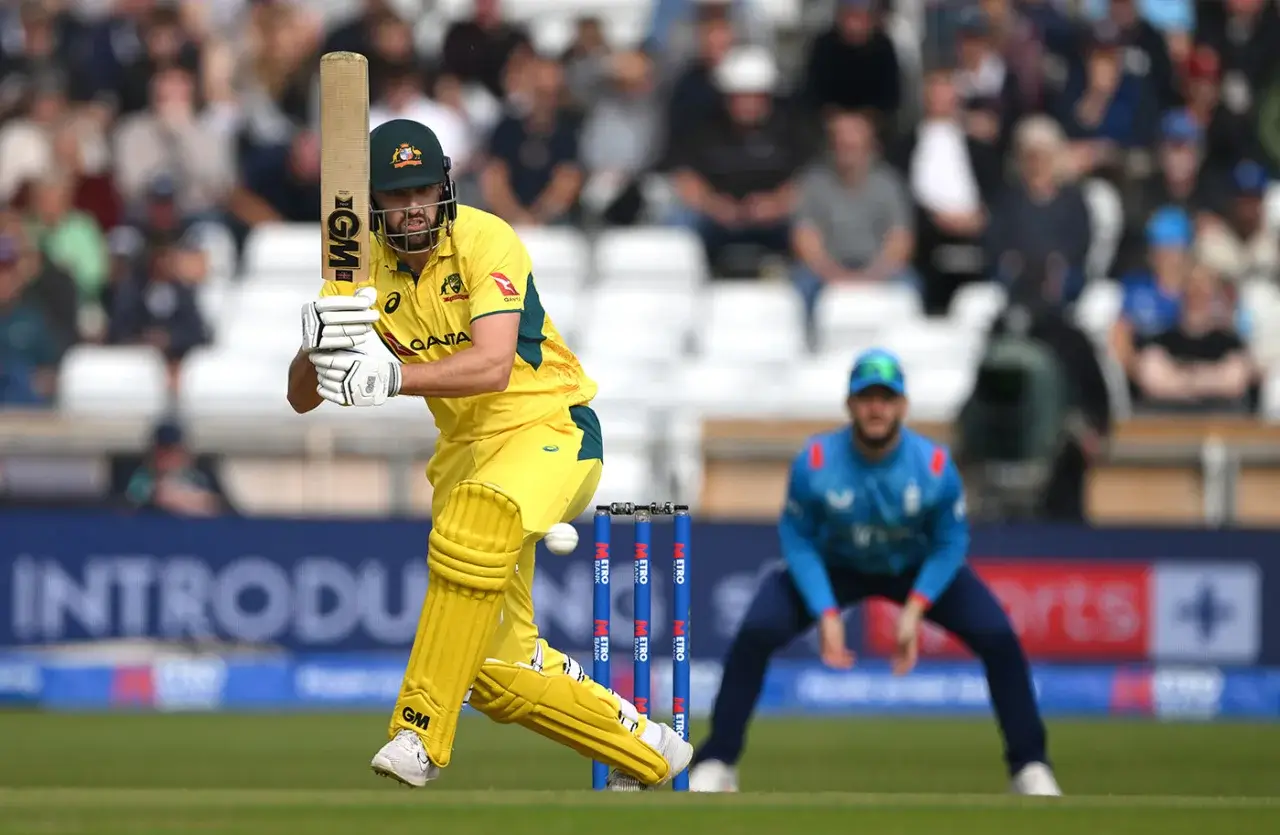Matt Short has always preferred batting at the top of the innings. But as the T20 World Cup 2026 approaches, the Australian allrounder knows that flexibility could be his key to survival. The 29-year-old has set his sights on a middle-order role — the only realistic path into Australia’s starting XI for the tournament in India and Sri Lanka.
Having missed out on the 2024 World Cup in the West Indies as a reserve, Short is determined to make the upcoming one count. This ongoing T20 series against India feels like an audition, a final test of adaptability before the selectors finalize plans. For a player known for his power hitting and clever offspin, this is a defining moment in his career.
From Opener to Finisher: The Role Reversal
Matt Short’s rise was built on dominance at the top. His 66 off 30 against South Africa in 2023 remains one of Australia’s most explosive T20 innings. But with David Warner, Travis Head, and Mitchell Marsh almost certain to occupy the top order, Short has accepted reality — the path to India runs through the middle.
He understands that adaptability is no longer optional. “Personally, I love opening,” Short admitted. “But looking at the World Cup, our top order is locked in. My best chance is in the middle or lower order.” These words reflect maturity and a sense of team-first commitment, the kind that selectors value deeply.
Consistency Born from the Big Bash
Short’s story isn’t about overnight success. It’s about steady growth through the Big Bash League, where he led the Adelaide Strikers with authority. Consecutive Player of the Tournament awards in BBL 12 and 13 marked him as one of the most dependable domestic performers.
His blend of power and precision gave him a dual role — an opener who could destroy attacks and an offspinner who provided control. That consistency opened doors to both T20 and ODI squads in 2023, proving that he belonged at the international level. Now, the challenge is to transform that domestic dominance into global impact.
Adapting to Subcontinental Conditions
Australia’s next T20 World Cup will be played in India and Sri Lanka, where spin rules the middle overs. For Short, this means evolving his game. “There’s always room to improve,” he said. “My game against spin probably needs more work.”
It’s an honest admission. Short enjoys pace on the ball but must now learn to maneuver spinners, rotate strike, and pick gaps on turning pitches. Training sessions in India and Sri Lanka will test his ability to read the length and flight of the ball. Facing quality spin early could define whether he becomes a match-winner or a bench option.
Australia’s Middle-Order Puzzle
Australia’s middle order is stacked with power hitters — Glenn Maxwell, Marcus Stoinis, Tim David, and Mitchell Owen — all proven finishers with experience in Asian conditions. For Short, finding his niche among them is the real challenge.
Selectors want options. They are experimenting with Short at No.7, allowing him to adjust to situations that demand strike rotation, smart hitting, and awareness under pressure. His bowling adds another layer of utility — the ability to sneak in overs when conditions suit. In modern T20 cricket, that balance often decides selection.
Short’s Mindset: Hungry Yet Grounded
Despite missing out on the 2024 campaign, Short’s attitude remains grounded. “Playing for Australia is always special,” he said. “Whether it’s a World Cup or a series like this, I’m happy taking what I’m given.” That humility keeps him focused and hungry.
His calm presence makes him a coach’s dream — confident yet never complacent. This mindset echoes that of players like Cameron Green and Travis Head, who have evolved through phases before emerging globally. If Short continues to trust the process, his time might arrive when it matters most — in a knockout match next year.
The Evolution of a Modern Allrounder
The modern allrounder isn’t just about balance — it’s about versatility. Matt Short represents this evolution. He’s not the traditional spin-bowling opener or lower-order slogger. He’s a hybrid — an adaptable cricketer who can shift tempo and role based on the match’s needs.
Cricket Australia’s coaching staff values that. With the T20 format demanding quick tactical changes, a flexible player like Short becomes a valuable chess piece. His ability to bat from No.1 to No.7 and bowl a couple of tight overs gives Australia a rare combination that could prove vital on subcontinent pitches.
What Lies Ahead for Short?
Short’s next few games are crucial. The final matches against India at the Gold Coast and Gabba are not just fixtures — they are trials. If he shows fluency against spin and composure under pressure, selectors will likely pencil his name in for the World Cup squad.
However, the competition is fierce. Younger players like Josh Philippe and Ben McDermott are waiting for chances. The coming months will test Short’s mental toughness as much as his technique. His task is clear: make every innings count.
Conclusion
Matt Short’s journey to the T20 World Cup is more than a selection battle. It’s a story of reinvention, discipline, and quiet determination. From a natural opener to a flexible finisher, he’s adapting to Australia’s evolving needs.
As he sharpens his game against spin and embraces the middle-order challenge, Short stands on the edge of something special. The 2026 T20 World Cup could define his legacy — not just as a power hitter, but as Australia’s next complete allrounder. If he keeps this trajectory, his name won’t just be on the team sheet; it’ll be in the match-winning moments.







